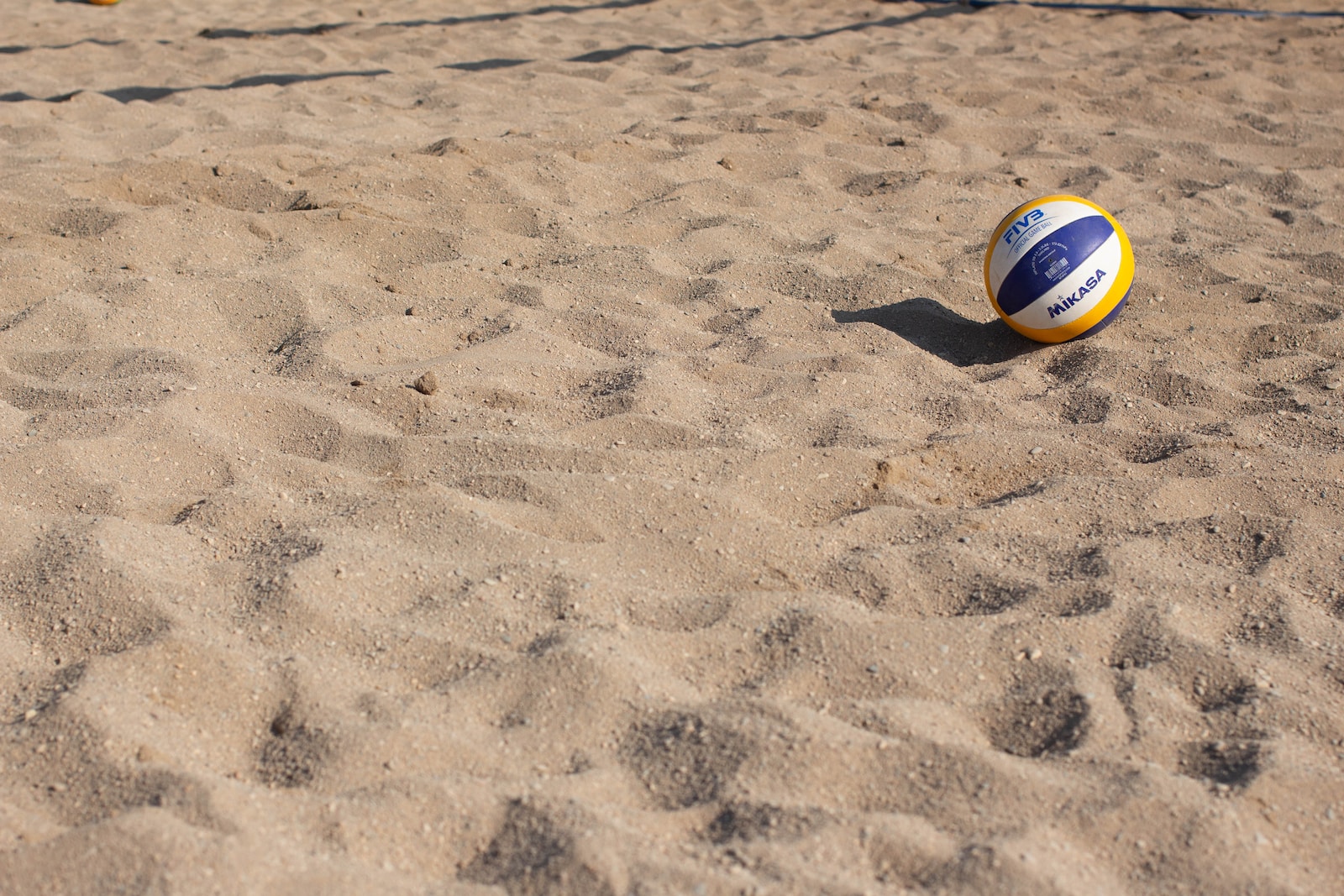Beach volleyball is an exhilarating sport that combines athleticism, strategy, and precise ball control.
As players strive for victory on the sandy court, questions often arise regarding the legality and proper execution of certain techniques, particularly the act of lifting the ball.
Can you lift in beach volleyball? This article aims to shed light on the rules and nuances surrounding the use of lifts in the game and explore both the reasons behind their prohibition
So, let’s dive into the world of beach volleyball, uncovering the truths about lifting and its impact on the game.
Definition of Carrying in Beach Volleyball
In beach volleyball, carrying refers to an illegal technique of making contact with the ball where the ball rests momentarily on the player’s hands, fingers, or any other part of the body.
It is also known as lifting or throwing.
The rules set by the Fédération Internationale de Volleyball (FIVB) emphasize clean and controlled contact with the ball.
Carrying disrupts the flow of the game and provides an unfair advantage as it allows a player to have extended control over the ball, potentially enabling them to manipulate its trajectory or spin.
To maintain fairness and promote skillful play, carrying is strictly prohibited in beach volleyball, and players are expected to execute clean and quick touches with their fingertips.
When Can You Lift in Beach Volleyball?
In beach volleyball, lifting, also known as carrying or throwing, is considered a violation of the rules and is generally not allowed.
The sport places a strong emphasis on clean, controlled contact with the ball.
According to the official rules set by the Fédération Internationale de Volleyball (FIVB), players must make clean hits or touches with their fingertips to legally play the ball.
Lifting occurs when a player holds or throws the ball, leading to uneven or prolonged contact.
This technique is not permitted because it can result in an unfair advantage and disrupt the flow of the game.
To maintain fairness and promote skillful play, lifting is strictly prohibited, and players are expected to execute clean and controlled touches when making contact with the ball in beach volleyball.
Examples of Legal Lifts in Beach Volleyball
In beach volleyball, players are not allowed to lift or carry the ball, as it is considered a violation of the rules.
However, there are certain instances where a ball may unintentionally come into contact with a player’s body and result in a legal lift.
These situations include:
Accidental contact during a block
When blocking an opponent’s attack at the net, the ball may occasionally brush against a player’s arms or hands.
As long as the contact is instantaneous and the player does not excessively hold or throw the ball, it is considered a legal lift.
Digging a hard-driven spike
In defense, a player may face a powerful spike from the opponent, and in the process of making a defensive play, the ball may momentarily touch their forearms or hands.
As long as the contact is immediate and the player does not carry or throw the ball, it is considered a legal lift.
Illegal Lifts That Will Be Called in Beach Volleyball
In beach volleyball, there are several types of illegal lifts that will be called by the officials.
These violations occur when a player intentionally or unintentionally lifts or carries the ball, resulting in an unfair advantage or disruption to the game.
Some examples of illegal lifts include:
Prolonged contact
If a player holds the ball for an extended period or allows it to rest on their hands or fingers, it is considered a violation.
This includes instances where the player uses their body or any other body part to control the ball for more than a momentary touch.
Throwing motion
When a player uses a throwing or pushing motion to propel the ball instead of making a clean hit or touch, it is considered an illegal lift.
This action alters the natural trajectory of the ball and goes against the rules of the game.
Excessive spin
If a player imparts excessive spin on the ball while making contact, it is considered an illegal lift.
The spin can be intentional or unintentional, but if it significantly alters the flight path or speed of the ball, it will be called as a violation.
Multiple contacts
When a player makes multiple consecutive contacts with the ball without the ball fully rebounding off their hands, it is considered an illegal lift.
This includes situations where a player attempts to juggle or manipulate the ball using consecutive touches.
FAQs
Can you lift the ball in beach volleyball?
No, lifting the ball is considered a violation in beach volleyball. The sport emphasizes clean and controlled touches with the ball, and lifting, also known as carrying or throwing, is strictly prohibited.
Why is lifting illegal in beach volleyball?
Lifting is deemed illegal in beach volleyball to maintain fairness and promote skillful play. Allowing lifting would provide an unfair advantage to players, as it can result in extended control over the ball, altering its trajectory or spin.
What happens if a player lifts the ball in beach volleyball?
If a player lifts the ball during a contact, it is considered a violation, and the opposing team will be awarded a point or side-out. The officials, referees, or umpires closely monitor the players’ ball contacts to enforce the rules and maintain the integrity of the game.
Are there any situations where lifting is allowed in beach volleyball?
No, lifting is not allowed in any situation in beach volleyball. The rules explicitly state that players must execute clean and controlled touches without holding, throwing, or excessively manipulating the ball.
What are the consequences of repeatedly lifting the ball in beach volleyball?
Repeatedly lifting the ball can result in penalties for the offending player or team. The officials may issue warnings, deduct points, or even disqualify players for persistent violations. The severity of the consequences depends on the officiating rules and the level of competition.
Are there any strategies or techniques similar to lifting that can be used in beach volleyball?
While lifting is illegal, players can employ various legal techniques to enhance their ball control skills. These techniques include precise and controlled touches using the fingertips, mastering clean hits, and employing effective positioning and communication with teammates.

